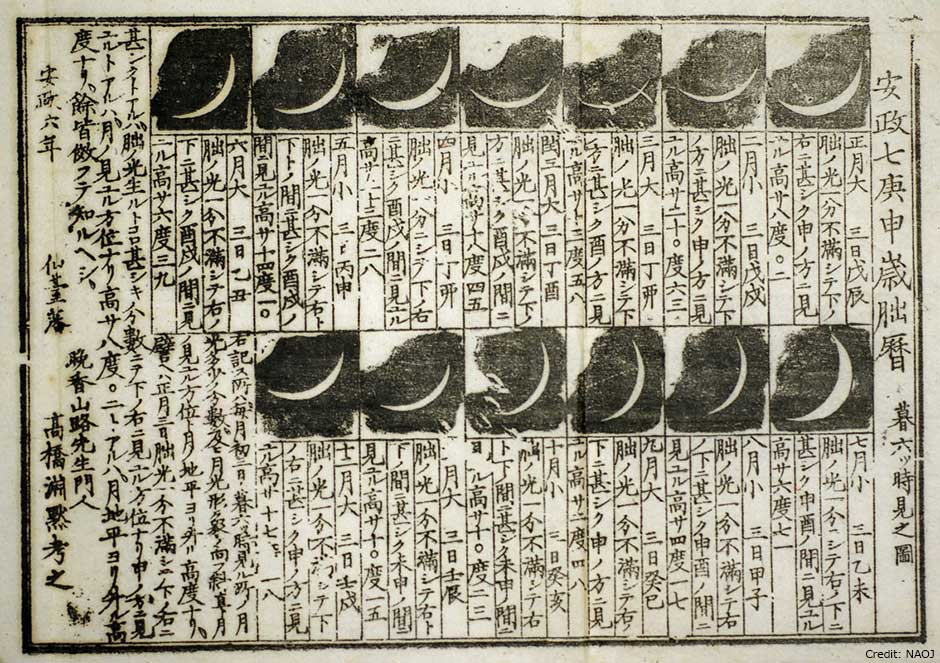Calendar of Waxing Crescent Moons for the 7th Year of the Ansei Era
Historical illustration・

This calendar was made by Enmoku Takahashi (1821-1870) of the Sendai Clan. As the name implies it was created based on the waxing crescent moons; it’s unique characteristic is that it depicts the width and orientation for each waxing crescent moon. It lists the sexagonary term (a traditional oriental cycle of 60 days for determining dates) for the 3rd day of each luni-solar month, and the altitude and azimuthal of the Moon at “Kuremutsu” (defined in traditional solar time as 36 minutes after sunset) on these days. The diagram is of course the appearance of the Moon on that day. As was standard for calendars of that time, it classifies each month as a long month (30 days) or a short month (29 days).
At the end of this Calendar of Waxing Crescent Moons, Enmoku Takahashi writes “Banko-Yamaji-Sensei-Monjin” (Student of Banko Yamaji), so it seems that he has connections to the Yamaji family who served as the Tenmonkata (Official Astronomer of the Edo government). And because he employs the Takeda style of the Wasan calculation system, we know that Enmoku Takahashi must also have been an apprentice of Riken Fukuda. Riken Fukuda had been an apprentice of Shingen Takeda, who in turn had been instructed in astronomy by Shigetomi Hazama, an Osaka amateur astronomer who had won acclaim for his revisions to the Kansei Calendar.
(Translator's Note: In addition to the standard Gregorian Calendar, Japan continues to use a reign era calendar. The different eras are defined by changes in the Japanese government, and accompanied by changes in Japanese society.)
Translation by: Ramsey Lundock (NAOJ)
Image Data
| Date Created | 1859 (6th year of the Ansei Era) |
|---|---|
| Creator | Enmoku Takahashi |
| Credit | Collection of the National Astronomical Observatory of Japan |